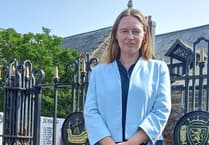In 1859 the Liskeard & Caradon Railway (L&CR) rented from the Duchy of Cornwall, land at Sharptor on Bodmin Moor to be used as a coal depot, ‘associated’ with it was a ‘cottage, garden and waste’. Living in the four-roomed cottage from around 1867 was John Dymond, who was employed by the L&CR as a general labourer.
The coal depot was so little used that by the 1891 census, John had been laid off and had found work at the Phoenix United Mine as a ‘Labourer in Tin Mine’ alongside his two sons: Harry, aged 29, and Edward, 26, and his daughter Rosie, 17. They all lived, as well as wife and mother Jane Dymond, in those four rooms at Sharptor. The mine closed in 1898 and the four members of the Dymond family were all out of work. According to the 1901 census, John was still working at 75 years of age, as an Agricultural Labourer, Harry and Edward had left home, and Jane at 71 was keeping house. Rosie was still unmarried at aged 27 with no occupation given, and John’s one-year-old grandson Manfred was visiting.
By 1904 the coal depot was no longer in use, and the cottage was described as ‘unfit for habitation’ and ‘would very likely be condemned by the sanitary authority’. And yet John Dymond, at 78 and described as a ‘pauper and former employee’ of the L&CR, was still living there, rent free, with Jane.
Unusual for the times, and considering their tough existence on Bodmin Moor, the Dymonds lived to a good age. John died in 1914 an ‘Old Age Pensioner’ aged 88, and Jane died in 1918 age 86, they had been married for 62 years and had nine children, seven of whom survived to adulthood.
.jpeg?width=752&height=500&crop=752:500)




Comments
This article has no comments yet. Be the first to leave a comment.